
Members of the cabbage family have been cooked and eaten for centuries. Romans brought them to Britain sometime around the 4th century BC, and the British later brought them to the Americas. Greens as Southerners know them now, originated in slave kitchens in the 19th century. (Amazing the history trivia you can remember from college.That 4th century BC thing should be in Trivial Pursuit.)
When it's time to eat greens, a fair-sized quantity is picked and it's referred to as a "mess o' greens". The exact amount that constitutes a "mess" depends on the number of people being served. Typically greens are cooked slowly in water with ham hock or a piece of salt pork for a long period of time until they are very tender. The accompanying liquid in the pan is known as "pot likker", and is a delicacy to be consumed. Greens are served with hot cornbread that's been cooked in a cast iron skillet. The cornbread is used to soak up the pot likker. Often sweet potatoes and some sort of field peas are also served. Pass pepper sauce to season the greens. (Pepper Sauce is hot pepper flavoured vinegar.)
Any greens in the cabbage family that do not form a head are called greens, including but not limited to, beet greens, collards, mustard greens, spinach, Swiss chard, and turnip greens. Although greens are eaten year-round, in the deep south they are at their best in January, February and March. My grandfather always said that collards need to be in a good frost before they are harvested. (I used to wonder if putting them in the freezer for a bit would accomplish the same thing, but he didn't think so.) My grandmother used to cook different sorts of greens together if there weren't enough of one kind to feed everyone. Her most common combination were mustard and turnip greens, but I've seen her put chard in the pot with those. And if there were small beets or turnips attached to the greens, she would dice them up in the pot, too.
The mess of greens being cooked today are collards that came in our CSA veggie box. And it just so happens that collards are my favourite type of greens. The fresh picked leaves filled up my kitchen sink. Now my grandmother always maintained that any greens had to be washed three times to get rid of all the grit. Whether or not they really need washing three times, I can't swear to, but I do it that way in her memory. To wash greens, fill the sink with cold water and swish the greens about. Remove the greens, drain the water, rinsing out any sand in the bottom of the sink, and repeat.
When the greens are clean, tear them into bite-sized pieces, discarding the tough ribs, and put them in a large pot with cold water. Greens will cook way down. A pot that is overflowing with raw greens will often cook down to fill the pot only about 1/4 full. Collards are sturdier and don't cook down as much, so my very full pot will probably wind up being around half full when the collards are done. Now I do not use ham hocks, salt pork or other such animal products, so when I cook greens I add a tablespoon or two of olive oil to the cooking pot. Bring to a boil, reduce heat and cook, uncovered, till greens are tender. For collards, they probably need to cook at least an hour or so. Season with salt after the greens have been cooking about 30 minutes.
Looks like too many collards to fit in the pot:
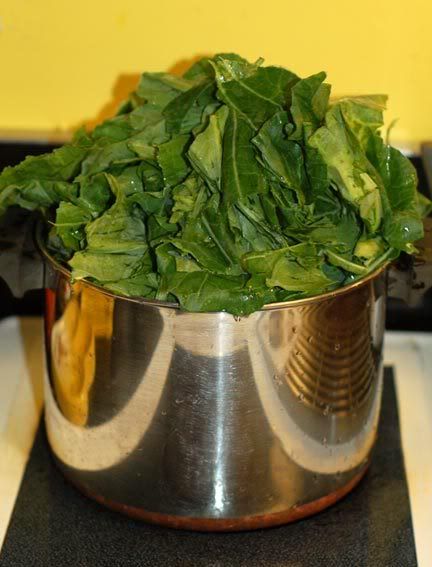
But it doesn't take long for the greens to start cooking down:
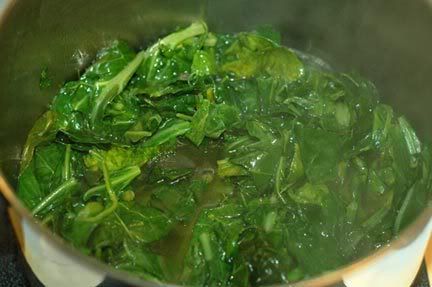
And finally, dinner: a nice serving of collards, cornbread and sweet potatos. Manna from heaven to a southerner.
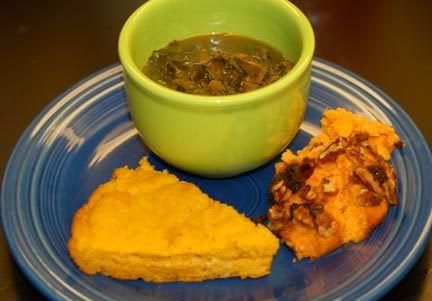

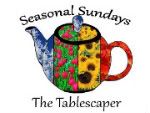


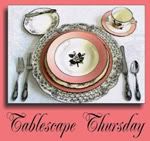








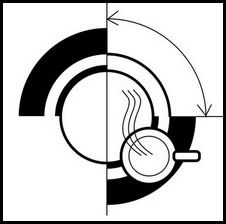

 Alabama Time
Alabama Time Paris Time
Paris Time Venice Time
Venice Time










5 comments:
Your making me hungry! ;)
Do you like Kale? It is a new favorite of mine.
C'mon over. There's plenty for guests.
I do like kale, but it is relatively new to me. We never had it growing up. Not sure why.
Was your grandmother the sort who never knew how much of any ingredient went in, she just "knew"? My late grandmother Rebecca made my favorite cornbread by a mile, and I never found any that duplicated it. When I moved out to New Mexico for a few years, I was craving it, so I asked her for the recipe. She made several batches just to figure out how much of each thing to put in. The secret is to put some oil in a cast iron skillet and pre-heat it with the oven so that it gets a nice crisp crust to it that contrasts with the crumbly cornmeal. And no sugar, because it isn't cake!
Christopher, yes! I was just explaining to Papa in the post on Sweet Potato Cornbread about heating the cast iron skillet before you pour in the batter.
So glad your grandmother figured out her cornbread for you! My grandmothers cooked the same way. I was around my maternal grandmother a lot, so I was always writing down her recipes. When I got married and moved to Texas, I had the opportunity to spend a lot of time with my paternal grandmother. Then I started writing down her recipes.
She would say things like, Oh, about a handful of sugar. Well, duh. She was small, so her handful didn't match the rest of us. I finally figured out that if she said a handful of sugar to get out the sugar and a measuring cup. She'd pour the amount into her hand and then we'd measure it. Finally I got lots of her recipes too, but it wasn't easy. LOL.
I'd love to try your grandmother's cornbread if you feel like sharing the recipe.
I posted it on my blog tonight per your inspiration. It is a really simple recipe, but it works!
Post a Comment